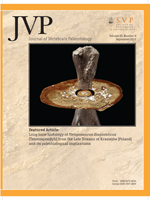An exceptionally well-preserved specimen of a batoid from the Turonian (Late Cretaceous) of Morocco has been named as †Tingitanius tenuimandibulus, sp. nov. The fossil has been identified as a member of the Platyrhinidae and represents the oldest known example of a thornback ray. Mechanical and acid preparation of the ventral surface has revealed the general body form of the specimen and permitted teeth and three morphotypes of dermal denticles to be extracted. Computed tomographic (CT) scanning of the chondrocranium and thoracic region has allowed the detailed study of the skeletal elements concealed within the rock. The phylogenetic position of the new specimen and implications for the phylogenetic positions of the ‘rhinobatoids’ are discussed. †Britobatos, gen. nov., is erected to accommodate †Raja primarmata which is here shown to be a sister taxon to the Platyrhinidae including †Tingitanius. It is likely that reassessment of isolated batoid teeth from the Cretaceous and Paleogene will confirm the former importance of the Platyrhinidae.
How to translate text using browser tools
26 June 2012
†Tingitanius Tenuimandibulus, a New Platyrhinid Batoid from the Turonian (Cretaceous) of Morocco and the Cretaceous Radiation of thePlatyrhinidae
Kerin M. Claeson,
Charlie J. Underwood,
David J. Ward
ACCESS THE FULL ARTICLE





